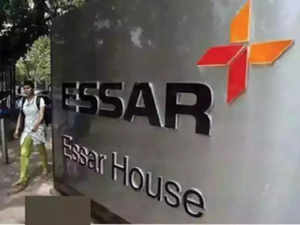 Agencies
AgenciesIndia’s insolvency tribunal has made a dangerous decision. Unless its judgment is quashed, credit costs for India Inc. will surge, shares of state-run banks will swoon and foreign investors will flee.
The case concerns the country’s most high-profile bankruptcy, Essar Steel India Ltd. Insolvency judges recently ruled that creditors whose claims are backed by collateral won’t get preferential treatment in the $6 billion sale of the company’s plant to ArcelorMittal. Secured creditors will stand in line with unsecured creditors.
This isn’t how it works anywhere in the world, and for good reason. In loans backed by collateral, the lender expects to be paid first out of bankruptcy proceeds. That’s why they accept a lower interest rate than unsecured creditors in the first place. For unsecured lenders to receive any of their money back, there must be something left over after paying the secured creditors.
Of the many twists and turns taken in the Essar bankruptcy, this is the most damaging. India has been attracting foreign distressed-debt specialists to help clean up its $200 billion-plus of bad loans. The ruling, if it survives, may kill that trend.
Under an agreement with the Essar creditors’ committee, ArcelorMittal’s offer would have made secured financial lenders more than 90% whole. While that’s a good recovery rate, it’s less than 100%, meaning unsecured operational lenders should have had to go empty-handed. In the insolvency judges’ view, though, the committee has no role to play in distributing the sale proceeds. While collateral gives seniority in a liquidation, everyone’s equal in a bankruptcy resolution. Or so the judgment says. As a result, financial creditors will see their take shrivel to 60.7% of claims, while that of the operational creditors will swell to the same level.
Those who can expect a bigger share include Standard Chartered Plc, which was complaining about being offered less than 2% of its claim after lending to an Essar Steel subsidiary. Energy companies, power utilities, and even the state tax officer will have the same rank. All operational creditors, who were going to get nothing, will be on a par with State Bank of India and other financial creditors.
Consider the implications for future Indian deals. If a secured creditor sells to a distressed-debt specialist, the investor will have overpaid thinking its claim would get settled first and that it would make, say, 40 cents on a 20-cent investment. That won’t happen if the bounty is to be shared much more widely, restricting the payout to, say, 10 cents.
State Bank of India, which was expecting full recovery of its 110 billion rupees ($1.6 billion) debt just a few months ago, has approached India’s Supreme Court to overturn the ruling. Hong Kong-based investor SC Lowy also wants to appeal the decision. If the verdict isn’t quashed, credit costs will skyrocket at a time when Indian real-estate developers can’t even borrow at 20%.
Borrowers will be willing to pledge assets, but which creditor will be able to put any value on them? Banks will steer most bankruptcies toward liquidation, leading to unnecessary job losses and higher loan-loss provisions in a capital-starved financial system. Global distressed-debt investors have been placing small bets in India, often by standing behind asset reconstruction firms. Now they’ll be unable to price the Indian opportunity.
The Essar saga has already gone on for more than 600 days, when the original legal limit was 270 days. Since the billionaire Ruia family that founded Essar didn’t want to cede its crown jewel to ArcelorMittal, an intense legal skirmish was unavoidable. But if India’s 2016 bankruptcy law ends up making matters worse, then the signature reform of Prime Minister Narendra Modi needs an urgent overhaul.
The Modi government, now in its second five-year term, is so desperate to ease the country’s financing crunch that it’s even willing to sell sovereign dollar debt, something India has always avoided. To seek capital from risk-averse pension funds while simultaneously repelling risk-loving private equity and vulture funds is an unfortunate distortion of priorities.
Read More News on
Download The Economic Times News App to get Daily Market Updates & Live Business News.
Read More News on
Download The Economic Times News App to get Daily Market Updates & Live Business News.









 Get Unlimited Access to The Economic Times
Get Unlimited Access to The Economic Times
